In-house marketing teams are in a resource war. You are tasked with driving enterprise-level results, but you’re competing against specialized agencies with deep benches and unlimited tools. This is not a fair fight, unless you leverage the right AI.
The game has changed. Manual bid-tweaking and weekly ad copy reviews are obsolete. AI-powered PPC tools are the only way to manage campaigns at scale, optimize budgets in real-time, and maximize your return on ad spend. These tools are no longer a “nice-to-have”; they are a mandatory part of your marketing stack.
They handle the repetitive, data-heavy tasks, freeing your team to focus on high-impact strategy and creativity. This is how you scale your capability, not your headcount.
Why AI-Powered PPC is No Longer Optional?
Your success hinges on continuous, granular optimization. You need tools that learn from your performance data, identify patterns humans miss, and execute changes faster than any competitor.
The best AI platforms reduce manual campaign work by over 40%, allowing one marketer to achieve the output of two. For in-house teams with fixed budgets, this efficiency gain is your primary lever for profitability.
Your platform must learn, recommend, and integrate. This list is your blueprint.
15 Essential AI-Powered PPC Tools
Category 1: The Command Centers (Management & Analytics)
These platforms act as your central hub for optimization and reporting.
NinjaCat
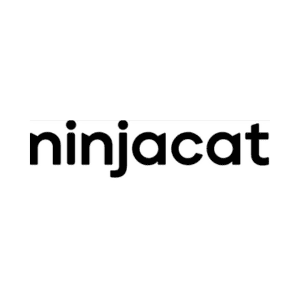
NinjaCat is your single source of truth. You must use it to end the chaos of bouncing between dashboards. It centralizes marketing data from over 100+ integrations (including Google, Meta, and Microsoft) into one platform. Its power, amplified by the 2021 acquisition of Shape.io, lies in its AI Agents.
Think of these agents as a dedicated analyst on autopilot. They are task-focused workers trained on your data. They must handle:
- Negative keyword discovery
- Spend monitoring and budget pacing.
- Creative quality assurance
- Anomaly detection
This platform is essential for teams that need to deliver comprehensive, white-labeled reports and integrate call tracking at scale.
Best for: Unified, cross-channel analytics and reporting.
Groas.ai
Groas.ai is a specialist in Google Ads creative and landing page optimization. Its AI is trained on over $500 billion in profitable ad spend data, allowing it to see patterns that generic models miss.
It analyzes 247 contextual data points (time of day, device, user history) to predict engagement before serving an ad. The platform dynamically generates hyper-personalized ad copy and landing page content to match specific search intent. This is how you achieve Quality Score dominance. Users report up to 27% higher CTRs.
Best for: Hyper-optimizing Google Ads copy and Quality Score.
BidX
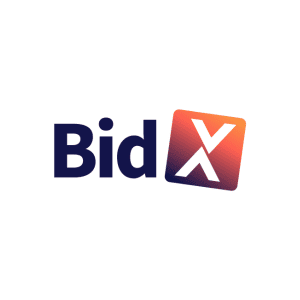
BidX is purpose-built for brands and agencies selling on Amazon and Walmart, offering AI-driven automation to eliminate campaign busywork and maximize ad impact. Its strength lies in helping in-house teams to create and optimize campaigns 12x faster, saving up to 14 hours per week. The platform’s advanced algorithms drive up to 36% better ad performance in just six weeks and have been shown to lift sales by 43% within four months.
BidX masterfully covers search, display, and video ads, integrating Amazon DSP and custom audience targeting to win incremental sales both on and off Amazon. Its ChatGPT-powered Campaign Creator and automated keyword/bid management allow even lean teams to operate like an agency, freeing up time for big-picture strategy. Analytics are a major differentiator: Amazon Marketing Cloud integrations offer deep customer journey insights, while competitor benchmarking identifies new growth opportunities.
Best for: Marketplace brands and agencies demanding full-funnel PPC automation and cross-platform scale.
Optmyzr

Optmyzr is the PPC expert’s toolkit. It provides a comprehensive suite of optimization tools for everything from bid management to budget planning. Its strength is advanced, rule-based automation.
You can set sophisticated rules that apply different logic to different campaigns, automating bid adjustments based on weather, time of day, or custom parameters. This is critical for managing diverse product lines.
Crucially, Optmyzr provides tools to manage and analyze Google’s Performance Max campaigns, giving you back the control and insights that PMax often hides.
Skai

Skai (formerly Kenshoo) is your commerce media command center. You must use this when you manage a complex media mix across 100+ publishers and retail networks, from Google and Meta to Amazon, TikTok, and Instacart.
Skai’s AI, “Celeste,” provides actionable strategies from complex commerce data. Its true power is dynamic campaign creation for large catalogs. It crawls your product feeds, automatically creates optimized ad groups from product attributes, and builds bid rules based on profitability. This is how you manage thousands of SKUs.
Best for: Enterprise-level, omnichannel commerce and retail media.
Acquisio (by Newfold Digital)
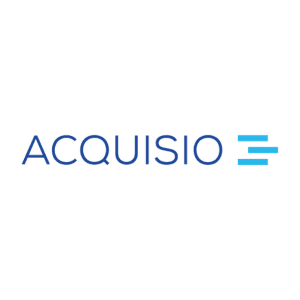
Acquisio has evolved. It is now a local marketing platform essential for businesses that need to manage campaigns across many physical locations. If your team functions like an agency for dozens or hundreds of storefronts, this is your solution.
Its AI automates campaign creation, management, and reporting for Google, Microsoft, and Meta, all optimized for local intent. It solves the unique problem of scaling hyperlocal PPC.
Best for: In-house teams managing PPC for multi-location businesses.
WordStream Advisor
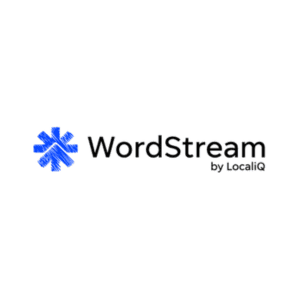
WordStream is built on the “20-Minute Work Week” premise. It simplifies PPC management for teams without deep, specialized expertise.
The platform analyzes your Google, Microsoft, and Meta accounts and delivers a prioritized list of actionable recommendations. It uses industry benchmarks to show you where you’re lagging and what to fix first. This is the fastest way to implement best practices and avoid costly mistakes.
Best for: Small teams needing guided, high-impact optimizations.
Category 2: The Specialists (Targeted ROI-Drivers)
These tools solve one problem exceptionally well, delivering immediate, measurable ROI.
Adalysis

Adalysis is your automated testing manager. It is laser-focused on auditing and optimizing your search campaigns. The platform automatically analyzes your account for issues like keyword duplication, poor ad relevance, and negative keyword opportunities.
Its key feature is automated ad testing. It runs experiments across multiple ad groups simultaneously and provides clear recommendations on winners, removing a massive manual workload from your team. Its accessible pricing makes it a must-have for teams of any size.
Best for: Automated auditing and A/B testing in Google & Microsoft Ads.
TrueClicks

You cannot fix what you cannot see. TrueClicks is your automated PPC auditor. It constantly monitors your Google and Microsoft Ads accounts for costly errors, missed opportunities, and compliance issues.
Instead of manual checks, TrueClicks provides a single “TrueClicks Score” (from 0-100) that grades your account health based on over 60 best practices. Its AI flags critical issues like keyword cannibalization, broken landing pages, and conversion tracking failures. This is essential for preventing silent budget waste.
Best for: Continuous PPC auditing, monitoring, and compliance.
Madgicx
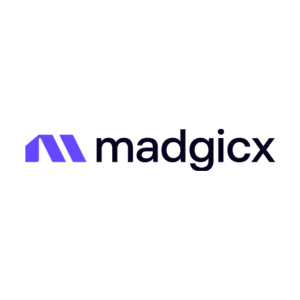
Madgicx is your AI media buyer for social commerce. While it supports Google, its deep strength lies in mastering Meta. It provides a full-funnel solution, automating ad creation, audience targeting, and budget allocation across your entire funnel.
The AI identifies your most profitable ad sets and automatically scales them while cutting spend on losers. For in-house e-commerce teams, this tool centralizes creative insights and budget optimization.
Best for: E-commerce teams heavily focused on Meta (Facebook/Instagram) ads.
Adext
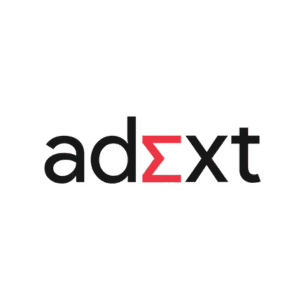
Adext solves a core problem: finding your next best audience. While other tools optimize bids, Adext’s AI focuses on audience intelligence. It automates the exploration and exploitation of audiences across Google and Meta.
The platform runs thousands of micro-tests simultaneously, identifying high-performing audience combinations (e.g., “35-44-year-old female tech managers in Chicago who read Wired”) that your team would never find manually. It’s an audience-finding machine that works 24/7 to lower your CPA.
Best for: Automated audience discovery and micro-segmentation.
Category 3: The Enablers (Platforms & Integrators)
These tools provide the foundation or the connective tissue for your entire stack.
Google Ads (Native AI)

You must master the platform’s native AI first. Smart Bidding (like Target CPA or Target ROAS) and Performance Max are non-negotiable.
Google’s AI operates with data at a scale no third-party tool can match, adjusting bids in real-time for every single auction. The disadvantage is the “black box” lack of transparency.
The rule: Use native AI as your foundation. Then, overlay third-party tools (like Optmyzr or Adalysis) to add control, visibility, and strategic management on top of it.
Best for: Foundational, real-time bidding, and campaign automation.
Microsoft Advertising (Native AI)
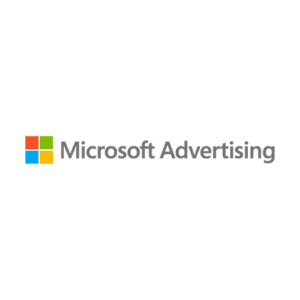
Do not ignore this ecosystem. Microsoft Advertising often provides lower CPCs and less competition than Google. For B2B teams, its integration with LinkedIn Ads is a mandatory tactic.
You can target users on the search network based on their LinkedIn profile data (company, job title, industry). This is the most powerful B2B targeting combination available today.
Best for: B2B marketing and reaching a high-intent, professional audience.
Semrush PPC Toolkit

Semrush is not a campaign management tool; it is your strategic research weapon. Before you build a campaign, you must use Semrush to analyze your competitors.
You need to see:
- Which keywords are they bidding on?
- What does their ad copy look like?
- How much are they spending?
- Which landing pages are they using?
This intelligence is the difference between guessing and building a strategy based on proven market data.
Best for: Competitive intelligence and keyword research.
Zapier

Zapier is the automation glue for your stack. It is not a PPC tool, but it makes your PPC tools 10x more valuable. It connects your ad platforms to your CRM, email, and communication tools.
With it, you must automate critical workflows:
- Instantly send new leads from Facebook Lead Ads to your Salesforce CRM.
- Post a Slack notification when a new conversion happens.
- Add new leads to a specific email nurture sequence in HubSpot.
This orchestration bridges the gap between a click and a customer, ensuring no lead is ever wasted.
Your Framework for a Modern PPC Stack
Do not search for one “perfect” platform. The modern in-house team must build a strategic, layered stack.
- The Foundation (Native AI): Start here. You must leverage Google’s Smart Bidding and Performance Max, which are central to modern PPC auctions and bidding strategies, plus Microsoft’s native tools. This is your baseline.
- The Control Layer (Management Platform): Add a dedicated platform like Optmyzr, NinjaCat, or Adalysis for granular control, superior reporting, and cross-channel coordination.
- The Specialist Layer (ROI-Drivers): Bolt on specialized tools where you have a specific pain point. Use Groas.ai for creative, TrueClicks for auditing, or Skai for retail media.
- The Automation Layer (Integrator): Use Zapier to connect your stack to your business.
The shift in PPC is not about automation; it’s about AI-assisted decision-making. Your team’s job is to collaborate with algorithms, not just manage campaigns. You must adopt this framework to compete and win.


Comments are closed